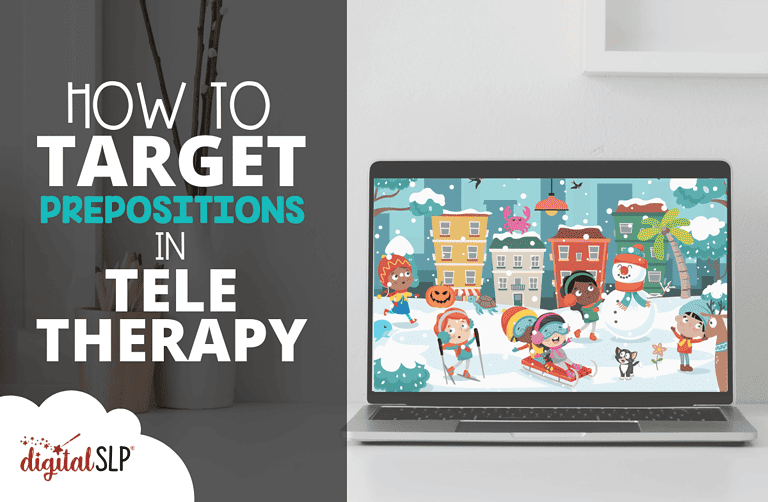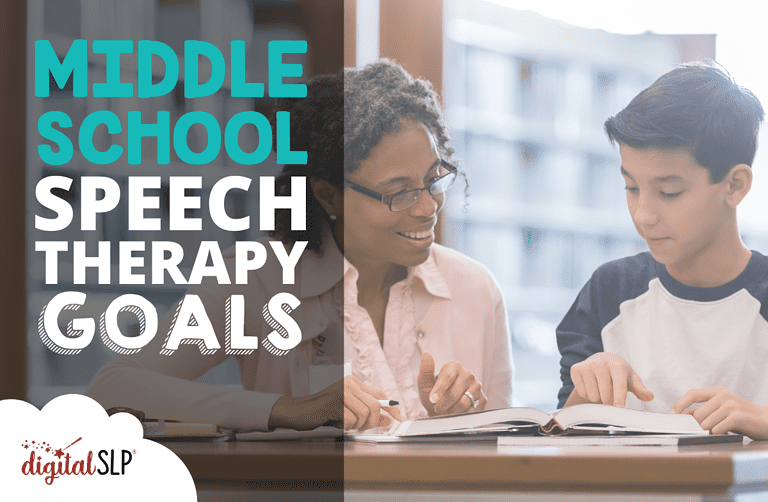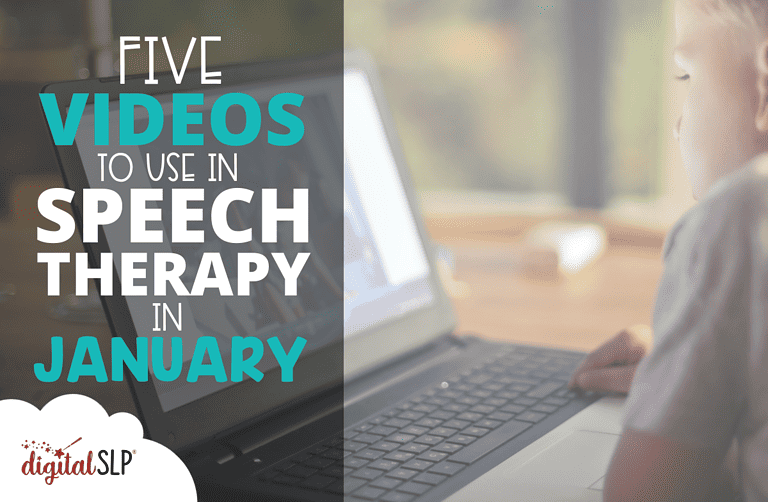I love digital resources, and I’m a big believer in the power of teletherapy services. At the same time, I know that some goal areas can be tricky in teletherapy—and prepositions are definitely in that category. In fact, one of our amazing Digital SLP members asked for support with how to target prepositions in teletherapy, and I’m excited to share this blog post with our favorite tips and tricks. (We also added some new Digital SLP resources for working on prepositions.)
You probably saw this one coming! Picture books are my go-tos for almost every goal area. I wanted to be sure to mention them here, because it can be easy to forget about using picture books in teletherapy. But there are plenty of free digital options out there, and they are teletherapy MVPs.
Since prepositions are so common, you don’t necessarily need to seek out specific preposition-focused books. You can use any book that you think your students will enjoy, and when you get to a preposition, spend some extra time talking about it, e.g., “He’s putting the dishes ON the table. Now the family is putting food ON their plates. What kind of food do you like to put ON your plate? How do you put it ON your plate?”
You don’t even need to follow the actual plot of the story—it can be just as effective to simply discuss the illustrations!
If your students need some extra support, it’s helpful to use picture books that offer more repetition and practice opportunities. These are some of my favorites:
- Bear in a Square: This cute option focuses on “in,” “on,” and “around.” (It’s also full of basic concepts!)
- Over and Under the Snow is a beautiful winter tale that primarily uses—you guessed it—“over” and “under.” (It would also be perfect for talking about seasons and hibernation!)
- Inside, Outside, Upside Down is a simple, preschool-friendly classic. After you read it with your students, they can get extra practice by acting out the story using a teddy bear, a cardboard box, and a toy truck.
- Up, Down, and Around is great for springtime, or for students who are interested in gardening, and it could inspire any number of hands-on follow-up activities.
- There Is a Bird on Your Head: This book is from Mo Willems’ delightful Elephant and Piggie series, and it’s full of opportunities to practice “on.”
If you’re in a hurry, picture books make great picture scenes. If you have a little more time, want to get creative, or have very specific needs, you could also try making your own picture scenes and using them to target prepositions in teletherapy.
My favorite tool for creating digital picture scenes is Canva! I have the paid version because I use it so much, but you can do a lot with the free version as well. I love to co-create a scene with students during a session, and the “presentation” template works well for that. I just open up a blank one, and then my student and I decide what kind of scene to make (e.g., farm, beach, mountains), and we take it from there, using Canva’s built-in selection of photos and graphics.
One especially useful feature of this activity is its flexibility—the student can tell you where to put different elements (e.g., “chairs around the swimming pool”), and when the scene is done, you can ask the student questions about it (e.g., “Where are the chairs?”). You can even “accidentally” make a mistake and put something in the wrong place, to spark a discussion with your student.
If you don’t have access to Canva, other presentation tools like PowerPoint or Google Slides also work well.
Digital resources are amazing, but sometimes we need to think beyond the screen! Even if you’re a teletherapist, there’s no rule against using “in person” materials. You can even try to encourage some laughter while you’re at it—humor helps us learn new information. It also strengthens the connection between us and our students, which isn’t always easy in teletherapy contexts. Here are some “old-fashioned,” fun-filled ideas to try:
- Dress-up: Do you have Halloween costumes, funny hats, big scarves, or colorful snow gear in a tub somewhere at home? Gather them up, stash them by your computer, and the next time you’re working on prepositions with a student, show them what you have and give them the opportunity to create your outfit—but they have to use prepositions (e.g., “Put the wings on your head”)! If you’d rather not dress up, you could do a similar activity with teddy bears or dolls.
- Simon Says: In this classic game of following directions, you give students simple instructions preceded by the words “Simon says.” It’s amazing how many prepositions you can target with silly directions like “put your elbow under your chin,” “put your thumb behind your ear,” “put your hand on your head,” etc.
- Crafts: This one requires some advance planning and a collaborative relationship with in-person facilitators, but basic craft projects are a fun and functional way to target prepositions.
- Barrier tasks: When you and your student are on opposite sides of a screen, it’s the perfect scenario for a barrier task! If you each have a piece of paper and a few different crayons or markers, you can take turns giving each other directions (e.g., “Draw a star below the heart”), and then hold up your papers to compare notes when you’re finished. (Pro tip: It’s helpful to have a prepared list of drawing prompts, or to somehow keep track of the instructions as you go, so you can check your student’s accuracy at the end of the activity.)
Students working on prepositions are often young, and they sometimes struggle with the stationary nature of teletherapy. Music to the rescue! It gives students a chance to wiggle, and many songs include prepositions. Here are a few that I love:
- “The Preposition Song”: This one needs a cheesiness alert, but it does a nice job of explaining what prepositions are, and it provides many examples.
- “Preposition”: An oldie but a goodie, this song uses a catchy folk melody and simple animations to demonstrate a variety of prepositions.
- “The Prepositions Song”: I love how this one includes plenty of repetition, and it explicitly invites students to sing along.
What’s your favorite way to target prepositions in teletherapy? Please let us know in the comments! And if you’re looking for flexible digital materials for all goal areas, you can sign up for a free 30-day trial with the Digital SLP here.













Recent Comments